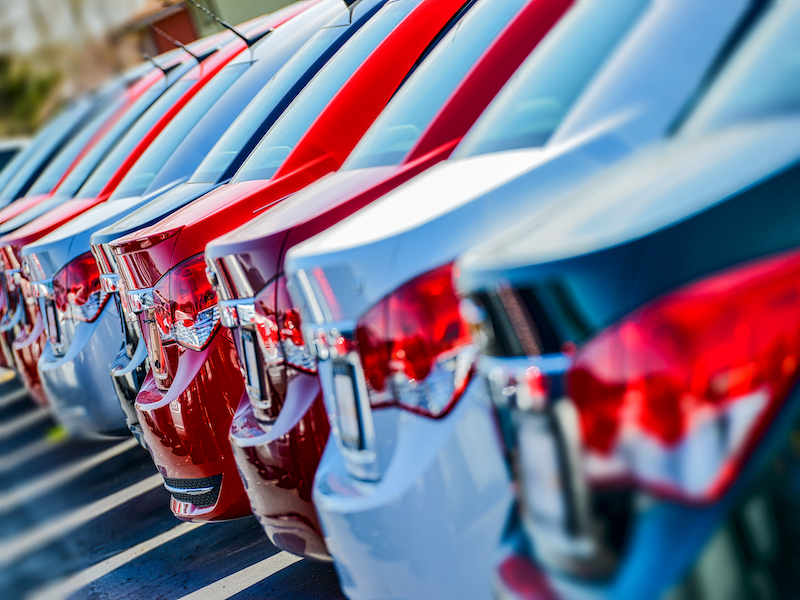auto
Will Auto Loans Become the Next Subprime Crisis?

Last Thursday, Jamie Dimon, CEO of JP Morgan Chase and Co, warned that auto lending is starting to look shaky.
Is subprime auto lending about to go the way of subprime mortgages?
There Has Been a Boom in Auto Sales in the Past Year

As the chart clearly demonstrates, auto sales boomed in the Fall of 2015, and with the exception of March in 2016, have remained fairly strong ever since.
In fact, the total for 2015, 17.47 million vehicles, broke all previous records.
The question is, how much of this boom is simply economic growth combined with low fuel prices, and how much of it needs to be attributed to subprime loans?
[ms_divider style=”normal” align=”left” width=”100%” margin_top=”30″ margin_bottom=”30″ border_size=”5″ border_color=”#f2f2f2″ icon=”” class=”” id=””][/ms_divider]
[ms_featurebox style=”4″ title_font_size=”18″ title_color=”#2b2b2b” icon_circle=”no” icon_size=”46″ title=”Recommended Link” icon=”” alignment=”left” icon_animation_type=”” icon_color=”” icon_background_color=”” icon_border_color=”” icon_border_width=”0″ flip_icon=”none” spinning_icon=”no” icon_image=”” icon_image_width=”0″ icon_image_height=”” link_url=”https://offers.thecapitalist.com/p/warrenbuffet/index” link_target=”_blank” link_text=”Click Here To Find Out What It Said…” link_color=”#4885bf” content_color=”” content_box_background_color=”” class=”” id=””]Warren Buffett Just Told His Heirs What He Wants them To Do With His Fortune When He Dies. [/ms_featurebox]
[ms_divider style=”normal” align=”left” width=”100%” margin_top=”30″ margin_bottom=”30″ border_size=”5″ border_color=”#f2f2f2″ icon=”” class=”” id=””][/ms_divider]
What is a Subprime Auto Loan?
A subprime auto loan is like any other subprime loan.
It is a loan made to a person with bad or no credit, and in this case happens to be made for the financing of a vehicle.
Such loans are generally offered because the lender is motivated to make money, even if it is on a risky loan, and expects to make a certain amount of money even if the person loaned to eventually defaults.
A Considerable Amount of the Current Growth in Auto Financing is Made up of Subprime Auto Loans
According to numbers from March, 20.8% of new auto loans could be considered sub-prime.
This is a record, and according to some, an ominous one.
There is a certain amount of concern that there will be a crisis in auto-lending similar to the one in subprime mortgages.
There Has, in Fact, Been an Increase in Subprime-Loan Defaults
Fitch Ratings says that while there was a slight downturn again in March, the rate of defaults in subprime loans was at 5.16% in February, the highest it has been in 20 years.
They also mentioned the rate of annualized net losses, which remained 30.4% up from where they were at the same time last year.
Underwriting standards, or perhaps more accurately the lack of any serious ones, were one of the factors they hold to be responsible for the increased rate of subprime auto loans.
They also believe the greater number of subprime loans will raise delinquency levels and the attendant losses will only accumulate.
Newer Lenders May Be Contributing to the Higher Delinquency Rates
The following graphs illustrate delinquencies for two lenders, AmeriCredit, and Exeter:

As the graphs illustrate, the delinquency rate for the newer lender, Exeter, is much higher than that of the more established lender, AmeriCredit.
This suggests that newer lenders are experiencing higher delinquency rates and pushing the overall numbers up.
TransUnion Suggests That Dropping Oil Prices May Be to Blame

The above graph shows that North Dakota, which was highly involved in the Shale Oil Boom and then had to issue a lot of pink slips, has a high number of auto defaults compared to states which were less involved.
Apparently, Louisiana won the top spot for the skyrocketing auto delinquency rates, and it was heavily affected by the oil crash.
Other oil-involved states, Texas and Oklahoma, went up about 14% each in delinquencies.
Jason Laky of TransUnion feels that the oil crash is putting financial pressure on families and individuals both, and thus contributing to default rates. It should be pointed out that people in the oil industry are not merely taking pay cuts but are losing their jobs outright as Chevron, ConocoPhillips, and Halliburton try to minimize their companies’ financial pain by cutting jobs.
The Resemblance Between This Developing Auto Episode and the Subprime Mortgage Crisis Cannot Be Denied
There has indeed been an increase in subprime loans and delinquency rates, and now there are beginning to be falling auto sales as well.
Some feel that since repossession works so much more efficiently in the auto world that a crash like a mortgage crisis isn’t possible with auto loans. Still, Investopedia points out that too many defaults might push automobile prices down and make it difficult to make up for losses by reselling repossessed vehicles.
Jamie Dimon was careful to stress that JP Morgan was in a secure position should there come to be a crisis but did not seem to feel that the same was true of all lenders.
His assessment is that there will be blood as a result of all the subprime lending.
Conclusion
It’s true that a certain amount of defaulting is only to be expected with subprime lending—after all, it is called subprime for a reason.
There are certain circumstances with the oil industry which may be contributing to the defaults, and it is easier to repossess a car than a house. However, the overall pattern is beginning to look disturbingly like the subprime crisis in housing.
Jamie Dimon may, in fact, be right to express concerns.















